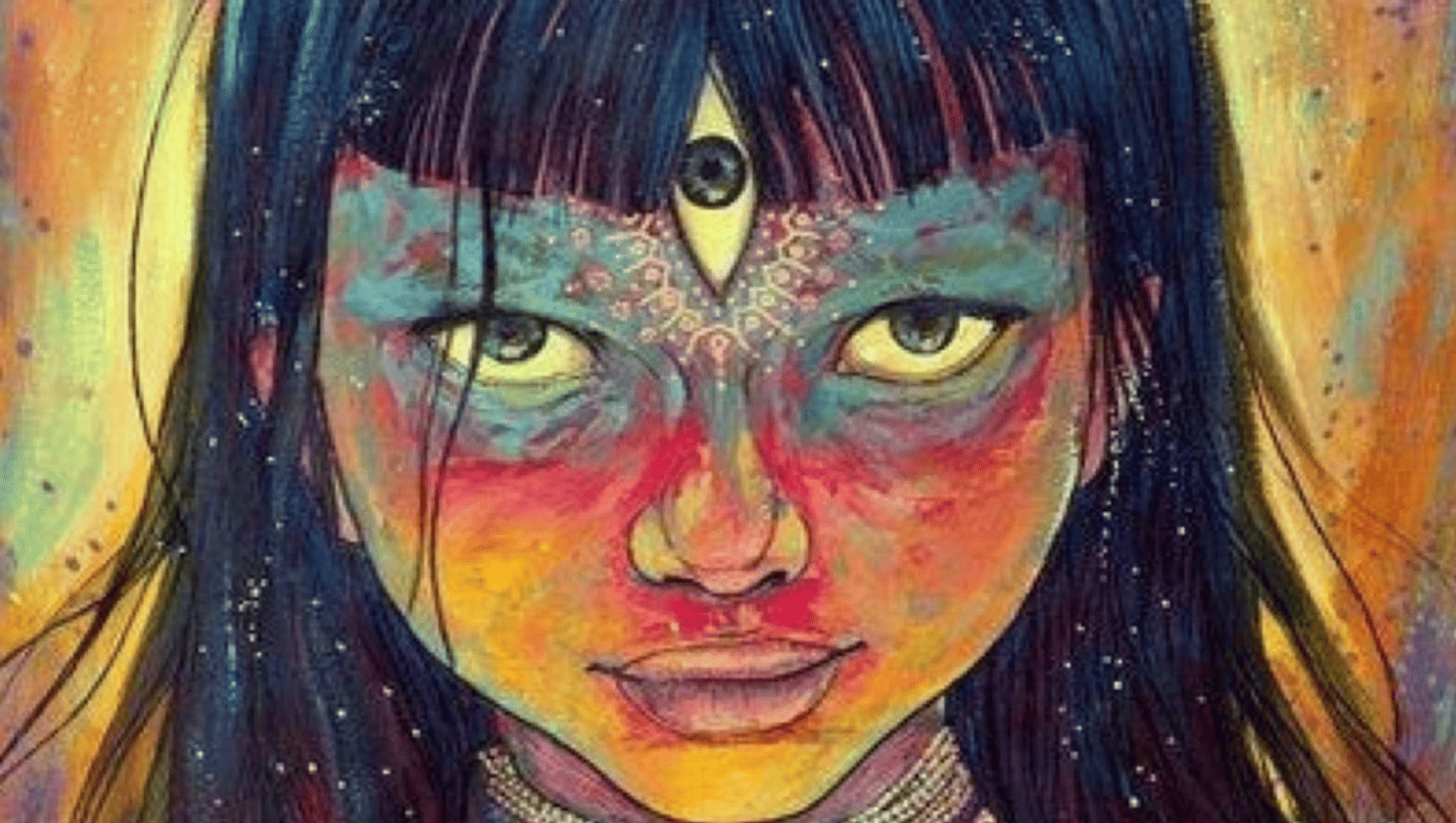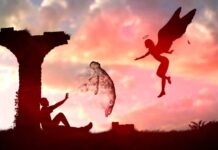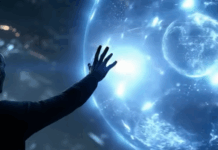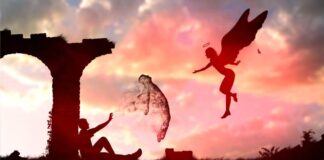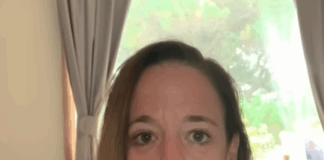From consciousreminder.com:
The third eye (also known as the inner eye) is a mystical and esoteric concept referring to a speculative invisible eye which provides perception beyond ordinary sight.
In certain dharmic spiritual traditions such as Hinduism, the third eye refers to the ajna, or brow, chakra. In Theosophy it is related to the pineal gland. The third eye refers to the gate that leads to inner realms and spaces of higher consciousness. In New Age spirituality, the third eye often symbolizes a state of enlightenment or the evocation of mental images having deeply personal spiritual or psychological significance. The third eye is often associated with religious visions, clairvoyance, the ability to observe chakras and auras, precognition, and out-of-body experiences. People who are claimed to have the capacity to utilize their third eyes are sometimes known as seers.
The pineal gland (also called the pineal body, epiphysis cerebri, epiphysis, conarium or the “third eye”) is a small endocrine gland in the vertebrate brain. It produces the serotonin derivative melatonin, a hormone that affects the modulation of wake/sleep patterns and seasonal functions. Its shape resembles a tiny pine cone (hence its name), and it is located near the center of the brain, between the two hemispheres, tucked in a groove where the two rounded thalamic bodies join. The Eye of Horus is an ancient Egyptian symbol of protection, royal power and good health. The eye is personified in the goddess Wadjet (also written as Wedjat, or “Udjat”, Uadjet, Wedjoyet, Edjo or Uto). It is also known as ”The Eye of Ra”. The name Wadjet is derived from “wadj” meaning “green”, hence “the green one”, and was known to the Greeks and Romans as “uraeus” from the Egyptian “iaret” meaning “risen one” from the image of a cobra rising up in protection. Wadjet was one of the earliest of Egyptian deities who later became associated with other goddesses such as Bast, Sekhmet, Mut, and Hathor. She was the tutelary deity of Lower Egypt and the major Delta shrine the “per-nu” was under her protection. Hathor is also depicted with this eye. Horus was the ancient Egyptian sky god who was usually depicted as a falcon, most likely a lanner or peregrine falcon. His right eye was associated with the sun Ra. The eye symbol represents the marking around the eye of the falcon, including the “teardrop” marking sometimes found below the eye.
Horus was the ancient Egyptian sky god who was usually depicted as a falcon, most likely a lanner or peregrine falcon. His right eye was associated with the sun Ra. The eye symbol represents the marking around the eye of the falcon, including the “teardrop” marking sometimes found below the eye. The In one myth, when Set and Horus were fighting for the throne after Osiris’s death, Set gouged out Horus’s left eye. The majority of the eye was restored by either Hathor or Thoth (with the last portion possibly being supplied magically). When Horus’s eye was recovered, he offered it to his father, Osiris, in hopes of restoring his life. Hence, the eye of Horus was often used to symbolize sacrifice, healing, restoration, and protection
There are seven different hieroglyphs used to represent the eye, most commonly “ir.t” in Egyptian, which also has the meaning “to make or do” or “one who does”.[5] In Egyptian myth the eye was not the passive organ of sight but more an agent of action, protection or wrath.
Mathematics
In Ancient Egyptian most fractions were written as the sum of two or more unit fractions (a fraction with 1 as the numerator), with scribes possessing tables of answers (see Rhind Mathematical Papyrus 2/n table).
Thus instead of 3/4, one would write 1/2 + 1/4.
Fractions drawn as portions of a square.
Further information: Egyptian fraction and 1/2 + 1/4 + 1/8 + 1/16 + · · ·
Different part of the Eye of Horus were used by the ancient Egyptians to represent one divided by the first six powers of two:
The right side of the eye = 1/2
The pupil = 1/4
The eyebrow = 1/8
The left side of the eye = 1/16
The curved tail = 1/32
The teardrop = 1/64
The Rhind Mathematical Papyrus contains tables of ‘Horus Eye Fractions’. In one myth, when Set and Horus were fighting for the throne after Osiris’s death, Set gouged out Horus’s left eye. The majority of the eye was restored by either Hathor or Thoth (with the last portion possibly being supplied magically). When Horus’s eye was recovered, he offered it to his father, Osiris, in hopes of restoring his life. Hence, the eye of Horus was often used to symbolize sacrifice, healing, restoration, and protection An interpretation of the Milky Way was that it was the primal snake, Wadjet, the protector of Egypt. In this interpretation she was closely associated with Hathor and other early deities among the various aspects of the great mother goddess, including Mut and Naunet. The association with Hathor brought her son Horus into association also. The cult of Ra absorbed most of Horus’s traits and included the protective eye of Wadjet that had shown her association with Hathor.
When identified as the protector of Ra, who was also a sun deity associated with heat and fire, she was sometimes said to be able to send fire onto those who might attack, just as the cobra spits poison into the eyes of its enemies. In this role she was called the Lady of Flame. She later became identified with the war goddess of Lower Egypt, Bast, who acted as another figure symbolic of the nation, consequently becoming Wadjet-Bast. In this role, since Bast was a lioness, Wadjet-Bast was often depicted with a lioness head. After Lower Egypt had been conquered by Upper Egypt and they were unified, the lioness goddess of Upper Egypt, Sekhmet, was seen as the more powerful of the two warrior goddesses. It was Sekhmet who was seen as the Avenger of Wrongs, and the Scarlet Lady, a reference to blood, as the one with bloodlust. She is depicted with the solar disk and Wadjet, however.
Eventually, Wadjet’s position as patron led to her being identified as the more powerful goddess Mut, whose cult had come to the fore in conjunction with rise of the cult of Amun, and eventually being absorbed into her as the Mut-Wadjet-Bast triad.
When the pairing of deities occurred in later Egyptian myths, since she was linked to the land, after the unification of Lower and Upper Egypt she came to be thought of as the wife of Hapy, a deity of the Nile, which flowed through the land.
Wadjet is not to be confused with the Egyptian demon Apep, who is also represented as a snake in Egyptian mythology.
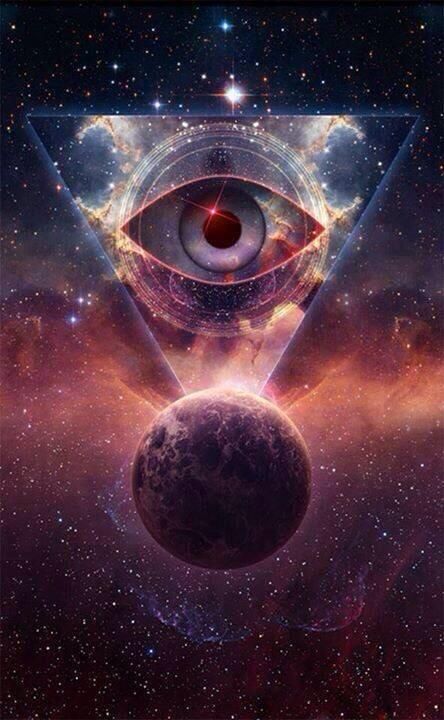
Other Traditions
In some traditions as Hinduism the third eye is supposedly located around the middle of the forehead, slightly above the junction of the eyebrows. In other traditions, as in Theosophy, it is believed to be connected with the pineal gland. According to this theory, humans had in far ancient times an actual third eye in the back of the head with a physical and spiritual function. Over time, as humanity became more physical and less spiritual, this eye atrophied and sunk into what today is known as the pineal gland.
In Hinduism
Hindu tradition associates the third eye with the sahasrara, or crown, chakra. However, in the Tantra yoga system it is associated with the sound Om, and is known as the Ajna chakra. In Tantra, the crown is believed to be the Shivatic lotus of ten thousand petals.
In Taoism
In Taoism and many traditional Chinese religious sects such as Chan (a cousin to the Zen school), “third eye training” involves focusing attention on the point between the eyebrows with the eyes closed, and while the body is in various qigong postures. The goal of this training is to allow students to tune in to the correct “vibration” of the universe and gain a solid foundation on which to reach more advanced meditation levels.
Taoism teaches that the third eye, also called the mind’s eye, is situated between the two physical eyes, and expands up to the middle of the forehead when opened. Taoism claims that the third eye is one of the main energy centers of the body located at the sixth chakra, forming a part of the main meridian, the line separating left and right hemispheres of the body.
In Christianity
According to the teaching of Father Richard Rohr, the concept of the third eye is a metaphor for non-dualistic thinking; the way the mystics see. In Rhohr’s concept, mystics employ the first eye (sensory input such as sight) and the second eye (the eye of reason, meditation, and reflection), “but they know not to confuse knowledge with depth, or mere correct information with the transformation of consciousness itself. The mystical gaze builds upon the first two eyes—and yet goes further.”
“It happens whenever, by some wondrous “coincidence,” our heart space, our mind space, and our body awareness are all simultaneously open and nonresistant. I like to call it presence. It is experienced as a moment of deep inner connection, and it always pulls you, intensely satisfied, into the naked and undefended now, which can involve both profound joy and profound sadness at the very same time.” Rohr refers to this level of awareness as “having the mind of Christ”.
In Neo-Gnosticism
According to the neo-gnostic teachings of Samael Aun Weor, the third eye is referenced symbolically and functionally several times in the Book of Revelation 3:7-13, a work which, as a whole, he believes describes Kundalini and its progression upwards through three and a half turns and seven chakras. This interpretation equates the third eye with the sixth of the seven churches of Asia detailed therein, the Church of Philadelphia.
In Theosophy
Adherents of Theosophy H.P. Blavatsky and Rick Strassman, have suggested that the third eye is in fact the partially dormant pineal gland, which resides between the two hemispheres of the brain. Various types of lower vertebrates, such as reptiles and amphibians, can actually sense light via a third parietal eye—a structure associated with the pineal gland—which serves to regulate their circadian rhythms, and for navigation, as it can sense the polarization of light.
C.W. Leadbeater claimed that by extending an “etheric tube” from the third eye, it is possible to develop microscopic and telescopic vision.[4] It has been asserted by Stephen Phillips that the third eye’s microscopic vision is capable of observing objects as small as quarks.
In Rosicrucianism
According to Max Heindel’s Rosicrucian writings, called Western Wisdom Teachings, the third eye is localized in the pituitary body and the pineal gland. It was said that in the far past, when man was in touch with the inner worlds, these organs were his means of ingress thereto.
Other interpretations
The third eye is used in many meditation schools and arts, such as in yoga, qigong, Aikido.
In the esoteric discipline of Kabbalah, the Ajna chakra is attributed to the sphere of Chokmah, or Wisdom, although others regard the third eye as corresponding to the non-emanated sephirah of da’ath (knowledge).
Disclaimer: We at Prepare for Change (PFC) bring you information that is not offered by the mainstream news, and therefore may seem controversial. The opinions, views, statements, and/or information we present are not necessarily promoted, endorsed, espoused, or agreed to by Prepare for Change, its leadership Council, members, those who work with PFC, or those who read its content. However, they are hopefully provocative. Please use discernment! Use logical thinking, your own intuition and your own connection with Source, Spirit and Natural Laws to help you determine what is true and what is not. By sharing information and seeding dialogue, it is our goal to raise consciousness and awareness of higher truths to free us from enslavement of the matrix in this material realm.
 EN
EN FR
FR

